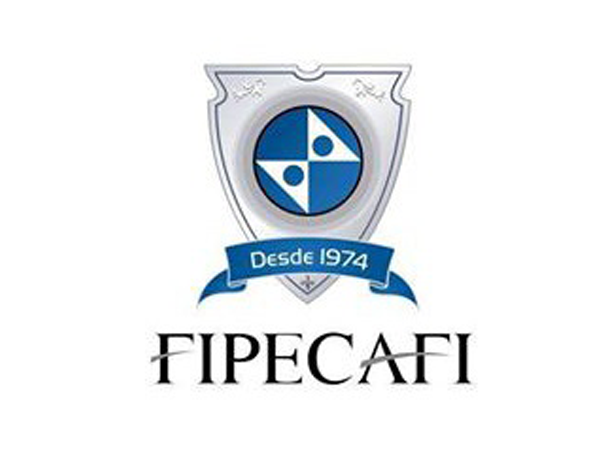Structure for articles and essays
The file structure should be in the following order:
- Title of the work: the title must have a maximum of 100 characters counting spaces and should be sufficiently specific and descriptive;
- Abstract: Charts, lists, tables, graphs, illustrations, equations and formulas, abbreviations, acronyms, symbols and citations shall not be used. The text of the Abstract shall have a length of at least 250 and at most 300 words. The distribution of the 300 words is based on the authors’ judgment of what they consider relevant for the understanding and use of the articles. During the revision stage, the abstract must be distributed in topics, as follows:
Results and contributions: text
Purpose: text
Gap: text
Relevance: text
Impact: text
Methodology: text
If the article is approved, the abstract will maintain its content, but will have the regular format (one paragraph, with no topics), which will be adjusted during the text edition and translation stage.
- Keywords: in the language of the text, with up to five of the best known descriptors of the area, separated with a comma and concluding with a period. Example: Keywords: ethics, code of ethics, management.
- Introduction;
- Development: the specific separations of each work are identified and no footnotes shall be added to the structure of the studies);
- Conclusion;
- Bibliographical references: citations in the body of the article shall be completed in the bibliographical references at the end of the text and in alphabetical order, in accordance with the last edition of American Psychological Association (APA) style.
Format for articles and essays
The article shall not exceed 32 pages and essay shall not exceed 15 pages, including references, typed in a software application compatible with Microsoft Office 2000 or higher for Windows, with the following specifications:
- Font: Times New Roman; size 12 (for texts) and 10 (for tables and figures);
- Spacing: double-spaced for the text, including formulas, abstract and bibliographical references and single-spaced for tables and figures;
- Alignment: justified, with an inset of 1 cm on the first line for paragraphs;
- Page number: in the upper right hand side;
- Measurements of the margins: 2,5 cm (upper, lower, right and left);
- Size of the paper: A4 (21.0cm x 29.7cm);
- Table: only this term shall be used in the title for quantitatively and/or qualitative data, presented in the format of lines and columns (do not use the term “chart”). Tables should be listed sequentially with a header explaining: what is represented, when it occurred and where it occurred. The title shall be placed above the table, pursuant to the APA style. Tables shall be editable in a software application compatible with Microsoft Office 2000 or higher for Windows, i.e., shall not appear as an image. E.g.: Table 1 Descriptive statistics for a sample with data on the basis of December;
- Figure: only this term should be used in the title for images (do not use terms like “illustration”, “graph”, “organizational diagram”, etc.). The title shall be placed above the image, preceded by the word Figure, followed by its number of order recurrence in the text, in numbers, pursuant to the standard of the APA. E.g.: Figure 1 Processes inherent to institutionalization;
- Formulas: shall allow editing in a software application compatible with Microsoft Office 2000 or higher for Windows, i.e. shall not appear as an image; and
- Acronyms: when these appear for the first time in the text, the form of the names shall precede acronyms, placed in brackets. E.g.: University of São Paulo (USP).
Structure for essays
The essay in RC&F is a text, not necessarily supported by empirical evidence, to discuss particular topics, scientifically relevant, with a reference support. In a broad sense, it is a thesis (main idea) defended by the author(s). Some characteristics shall be considered:
- Innovative theme or a theme explored under an innovative perspective;
- Clear position in relation to the proposed theme, although discussing pros and cons;
- The point of view defence with arguments, evidences (when necessary) and counterpoints;
- Bibliographical research, when it is possible, about the chosen theme, its scope, and the correlated scopes;
- Convincible discursive evidences to underlie your point of view and to convince the readers; and
Although the structure is freer than the structure for the empirical and theoretical-empirical articles, it is expected an introduction, motivation, explicitation of what is debated, discussion, and conclusion/recommendation/critique.
Types of essays
Persuasive: It intends to convince the reader about the author’s ideas or opinions. The author shall (a) show their point of view is reasonable, (b) keep the reader’s attention throughout the text, and (c) provide strong evidences to underlie their point of view.
Reflective: It starts with a proposition and an argument, then presents a counterpoint, and finally refutes the counterpoint with a new argument.
Essays analysis and acceptance process
The analysis and acceptance process editorial structure (associate editors and reviewers) follows the same process as the other articles. The requirements for the analysis sequence are:
- The essay innovation level. The theme must be new or presented under an innovative perspective;
- Relevance, contribution, provocation, and impact given by RC&F’s area and scope; and
- The argumentation quality and clarity in relation to the presented elements.
Tutorial of American Psychological Association (APA) style available at: https://apastyle.apa.org/instructional-aids/tutorials-webinars










